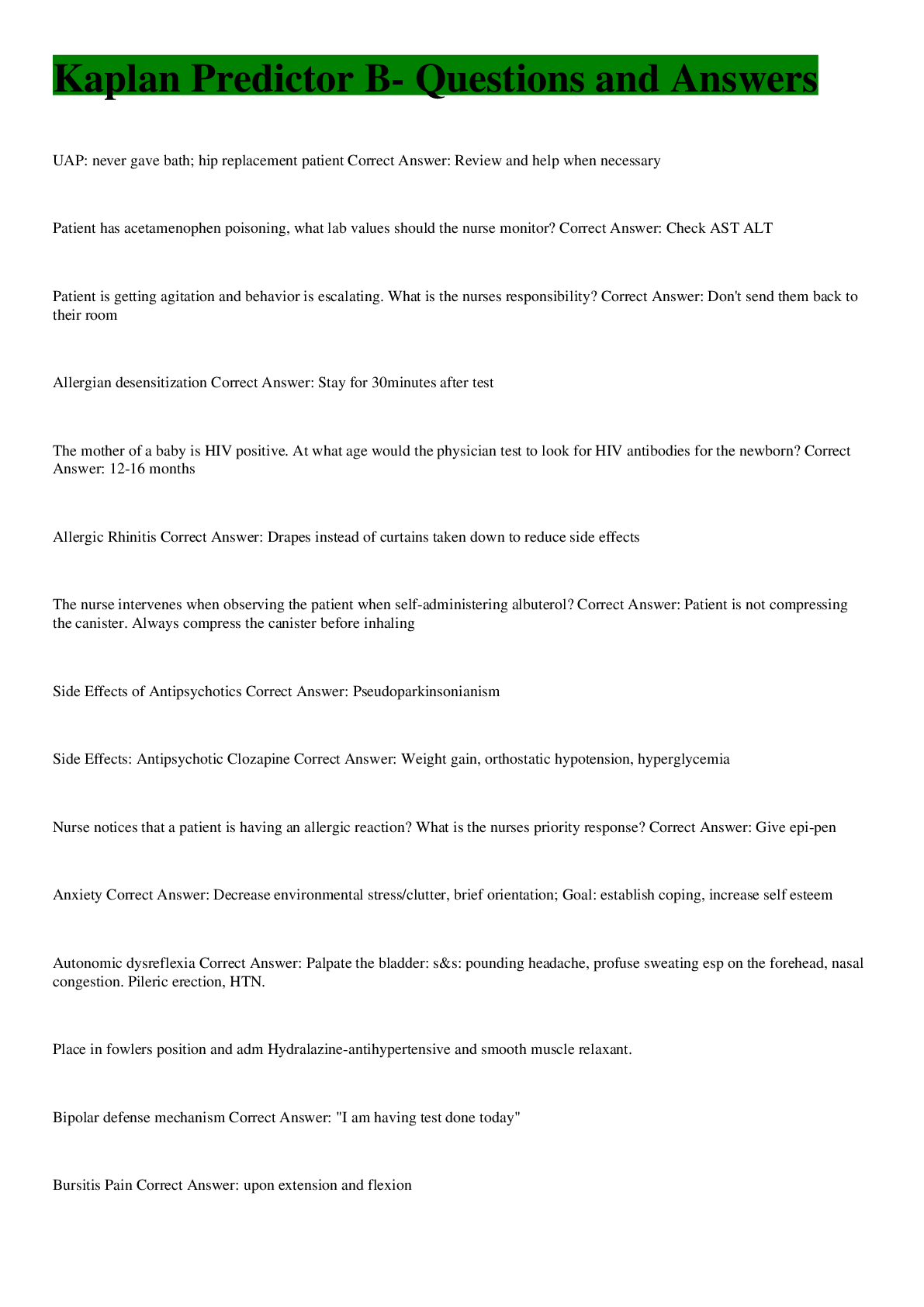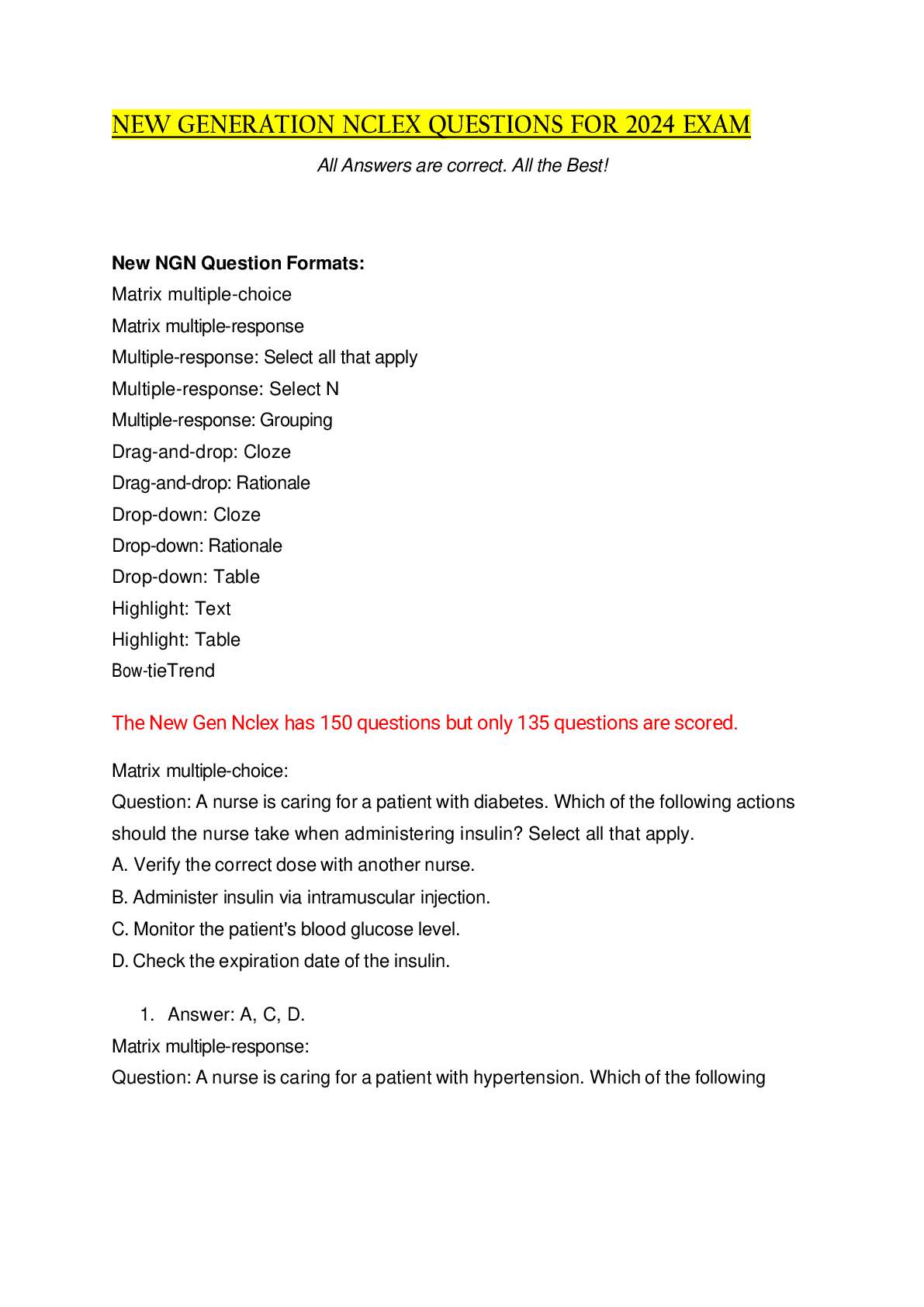NCLEX ARDS, ARF AND CH 65 CRITICAL CARE - QUESTIONS AND ANSWERS
Document Content and Description Below
NCLEX ARDS, ARF AND CH 65 CRITICAL CARE - QUESTIONS AND ANSWERS 1.Which is a proper nursing action for a patient in acute respiratory failure? A. Administer 100% oxygen to an intubated patient until ... the pathology has resolved. B. Provide chest physical therapy for patients who produce more than 30 mL of sputum per day. C. Use continuous positive airway pressure (CPAP) if the patient has weak or absent respirations. D. Administer packed red blood cells to maintain the hemoglobin level at 7 g/dL or higher. 2.What distinguishes hypercapnic respiratory failure from hypoxemic respiratory failure? A. Low oxygen saturation despite administration of supplemental oxygen B. Acidemia for which the body cannot compensate C. Respiration rate greater than 30 breaths/minute D. Heart rate increases above 100 beats/minute 3.Which patient is most likely going into respiratory failure? A. A patient who report that he feels short of breath while eating B. A patient with the following arterial blood gas values over the past 3 hours: pH 7.50, 7.45, and 7.40 C. A patient with an oxygen saturation value of 93% D. A patient with chronic obstructive pulmonary disease (COPD) who has distant breath sounds 4.A patient with a severe acute asthma exacerbation presents to the emergency department. Over the next hour, the patient remains in respiratory distress, but the respirations have slowed. What is the best explanation? A. The patient is developing respiratory muscle fatigue. B. The respirations are exchanging oxygen and carbon dioxide more efficiently. C. The patient's anxiety level is lessening. D. The body has compensated by retaining sodium bicarbonate. A. The patient is developing respiratory muscle fatigue. 5.Which patient is having the most difficulty breathing? A. The patient who reports one-pillow orthopnea B. The patient with an inspiratory to expiratory ratio of 1:2 C. The patient who speaks a sentence before breathing D. The patient with paradoxic breathing 6.Which signs and symptoms differentiate hypoxemic respiratory failure from hypercapnic respiratory failure (select all that apply)? A. Cyanosis B. Tachypnea C. Morning headache D. Paradoxic breathing E. Pursed-lip breathing 7.The oxygen delivery system chosen for the patient in acute respiratory failure should A. always be a low-flow device, such as a nasal cannula. B. correct the PaO2 to a normal level as quickly as possible. C. administer positive-pressure ventilation to prevent CO2 narcosis. D. maintain the PaO2 at =60 mm Hg at the lowest O2 concentration possible. 8.You are admitting a 45-year-old asthmatic patient in acute respiratory distress. You auscultate the patient's lungs and notice cessation of inspiratory wheezing. The patient has not yet received any medication. What does this finding suggest? A. Spontaneous resolution of the acute asthma attack B. An acute development of bilateral pleural effusions C. Airway constriction requiring intensive interventions D. Overworked intercostal muscles resulting in poor air exchange 9.You are caring for a patient who is admitted with a barbiturate overdose. The patient is unresponsive, with a blood pressure of 90/60 mm Hg, apical pulse of 110 beats/minute, and respiratory rate of 8 breaths/minute. Based on the initial assessment findings, you recognize that the patient is at risk for which type of respiratory failure? A. Hypoxemic respiratory failure related to shunting of blood B. Hypoxemic respiratory failure related to diffusion limitation C. Hypercapnic respiratory failure related to alveolar hypoventilation D. Hypercapnic respiratory failure related to increased airway resistance 10.You are providing care for an elderly patient who has a low PaO2 as a result of worsening left-sided pneumonia. Which nursing intervention will help the patient mobilize his secretions? A. Augmented coughing or huff coughing B. Positioning the patient to lie on his left side C. Frequent and aggressive nasopharyngeal suctioning D. Application of noninvasive positive-pressure ventilation (NIPPV) 11.For which patient would NIPPV be an appropriate intervention to promote oxygenation? A. A patient's whose cardiac output and blood pressure are unstable B. A patient whose respiratory failure is caused by a head injury with loss of consciousness C. A patient with a diagnosis of cystic fibrosis and who is producing copious secretions D. A patient who is experiencing respiratory failure as a result of the progression of myasthenia gravis 12.You are aware of the value of using a mini-tracheostomy to facilitate suctioning when patients are unable to independently mobilize their secretions. For which patient is the use of a mini-tracheostomy indicated? A. A patient whose recent ischemic stroke has resulted in the loss of his gag reflex B. A patient who requires long-term mechanical ventilation as the result of a spinal cord injury C. A patient whose increased secretions are the result of community-acquired pneumonia D. A patient with a head injury who has developed aspiration pneumonia 13.Which intervention is key to preventing ventilator-associated pneumonia as a complication in a patient with acute respiratory distress syndrome (ARDS)? A. Scheduled prophylactic nasopharyngeal suctioning B. Instilling normal saline down the endotracheal tube to loosen secretions C. Providing frequent mouth care and oral hygiene D. Using high tidal volumes on the ventilator 14.What pathophysiologic condition can result in ARDS? A. Damage to the alveolar-capillary membrane B. Copious exudates production C. Airway spasms and vasoconstriction D. Change in the inspiratory-to-expiratory ratio 15.Which is a classic finding for a patient with ARDS? A. Hypoxemia despite increased oxygen administration B. Bronchodilators ordered to relieve airway spasms C. Devel [Show More]
Last updated: 1 year ago
Preview 1 out of 71 pages

Reviews( 0 )
Document information
Connected school, study & course
About the document
Uploaded On
Mar 14, 2023
Number of pages
71
Written in
Additional information
This document has been written for:
Uploaded
Mar 14, 2023
Downloads
0
Views
79

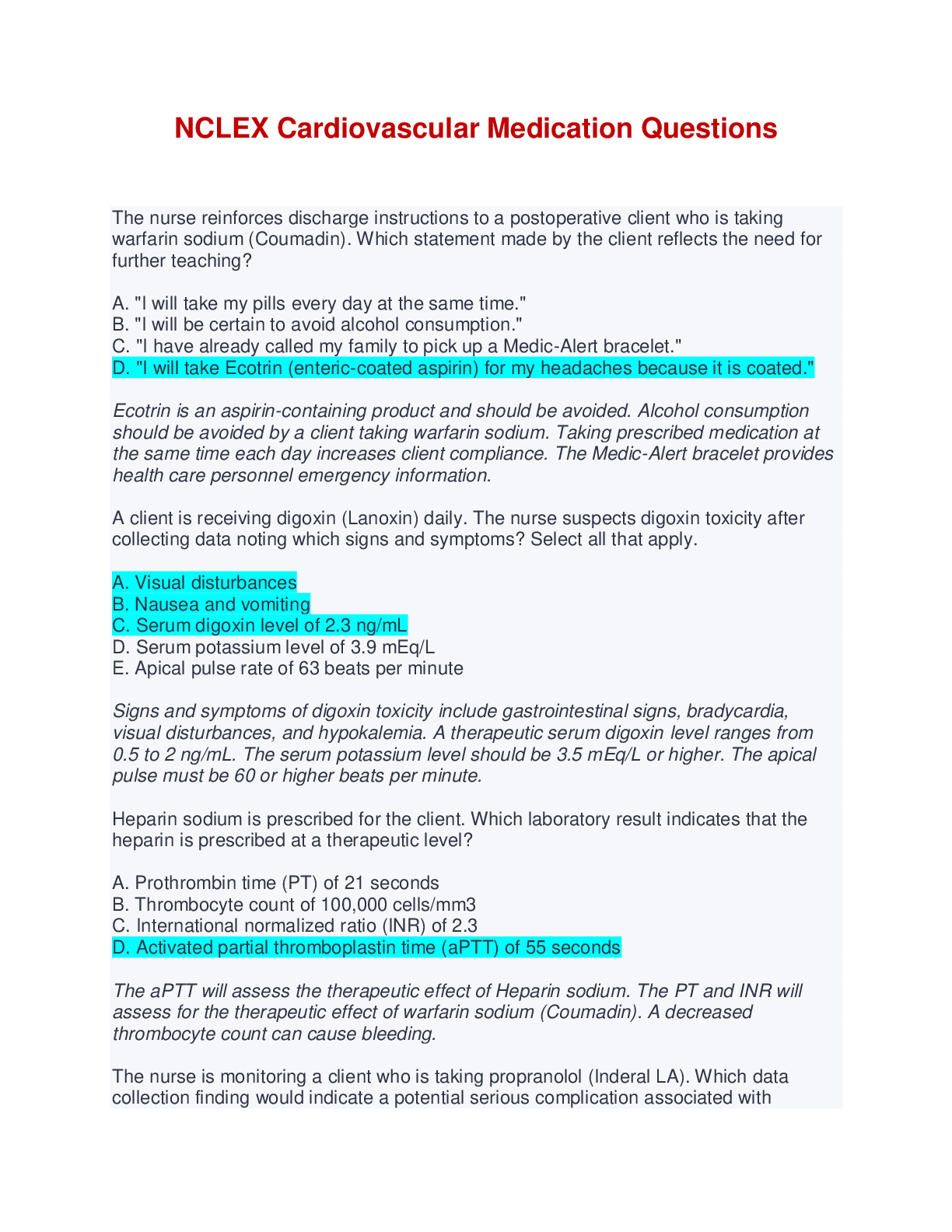
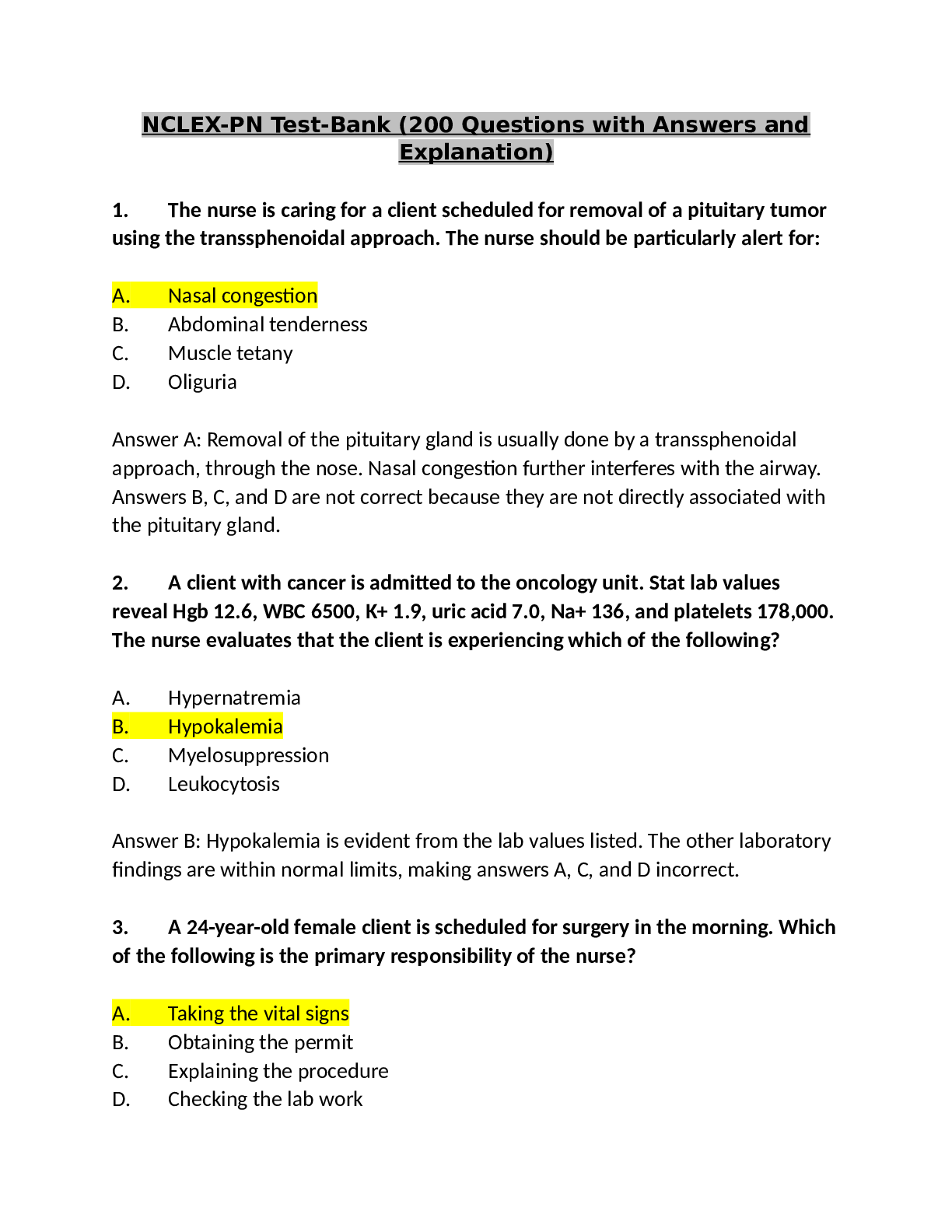
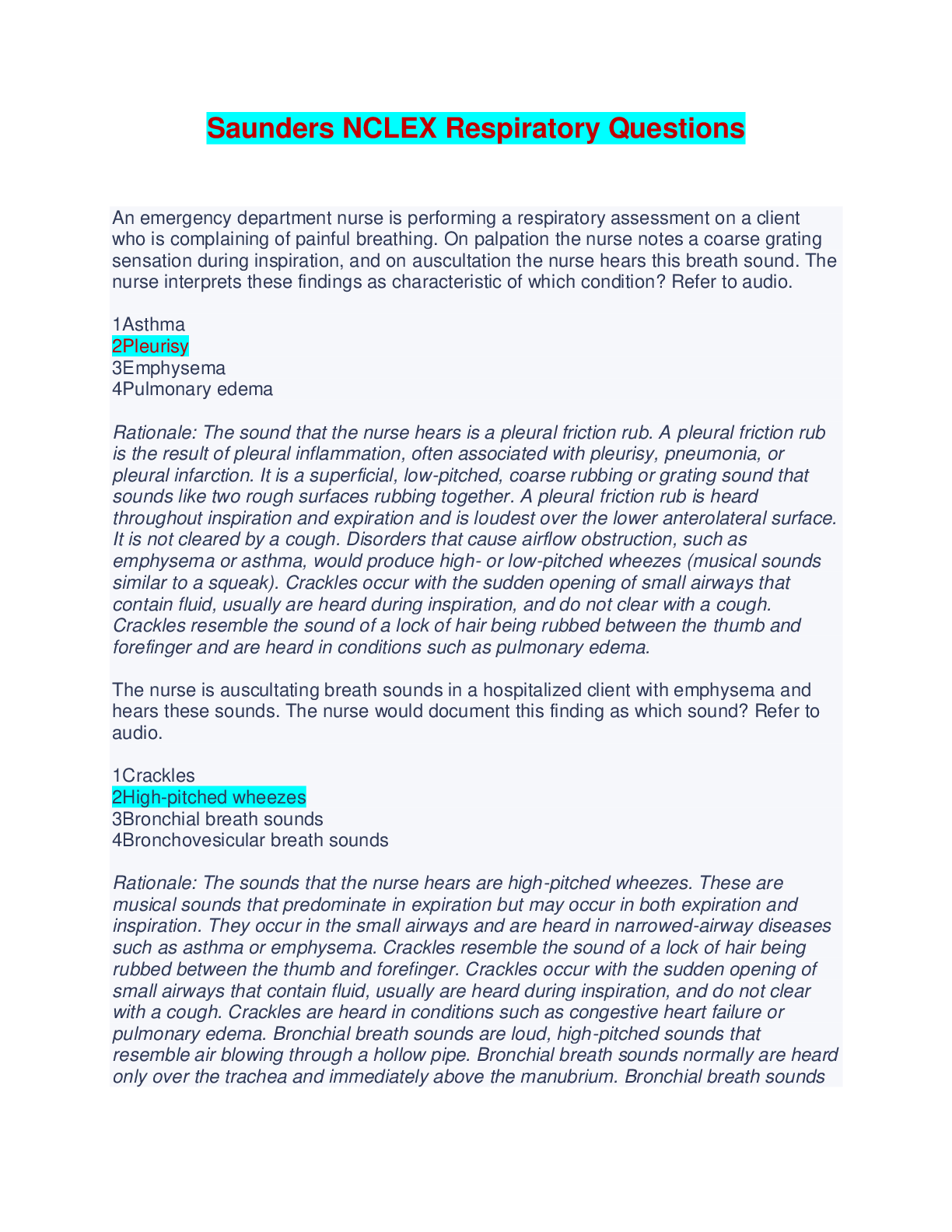
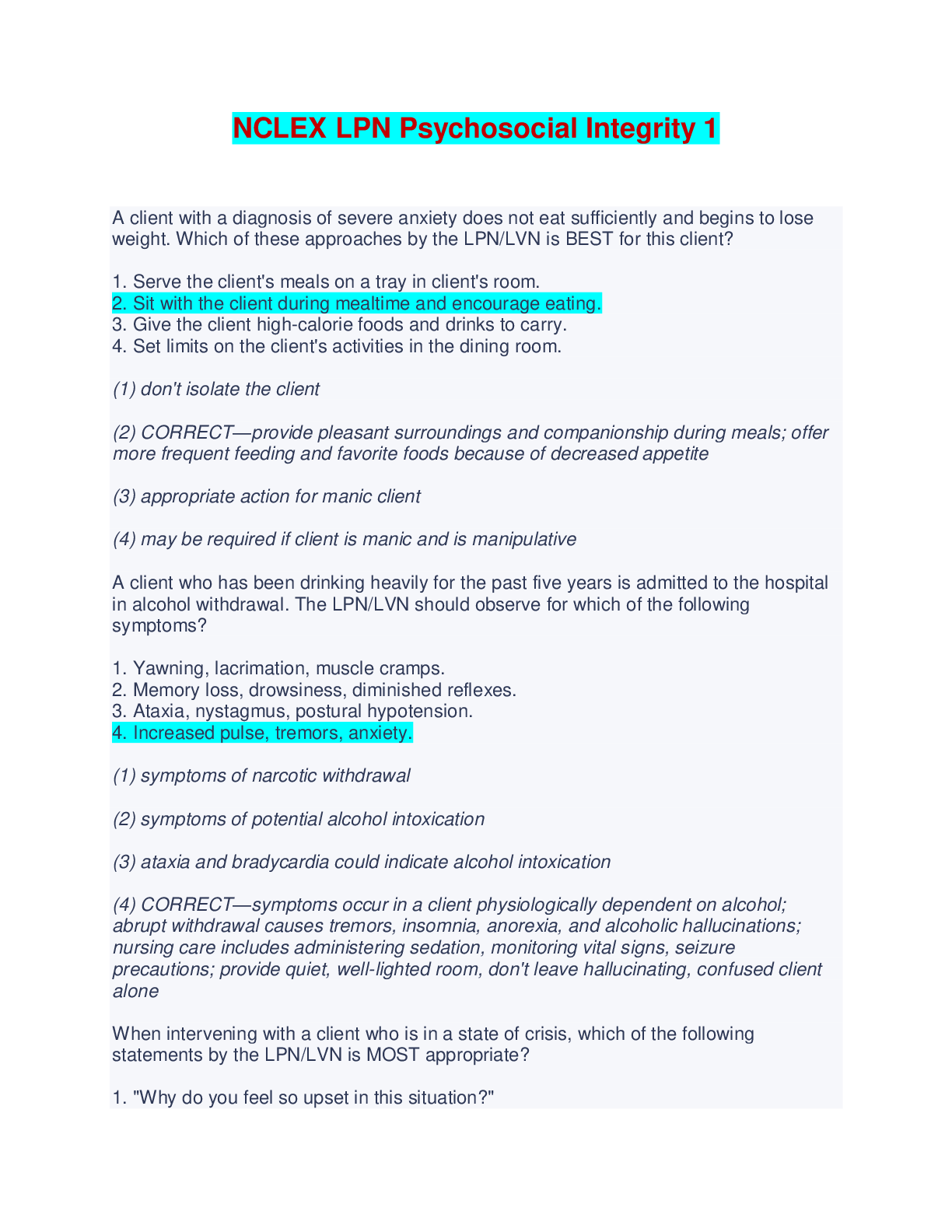
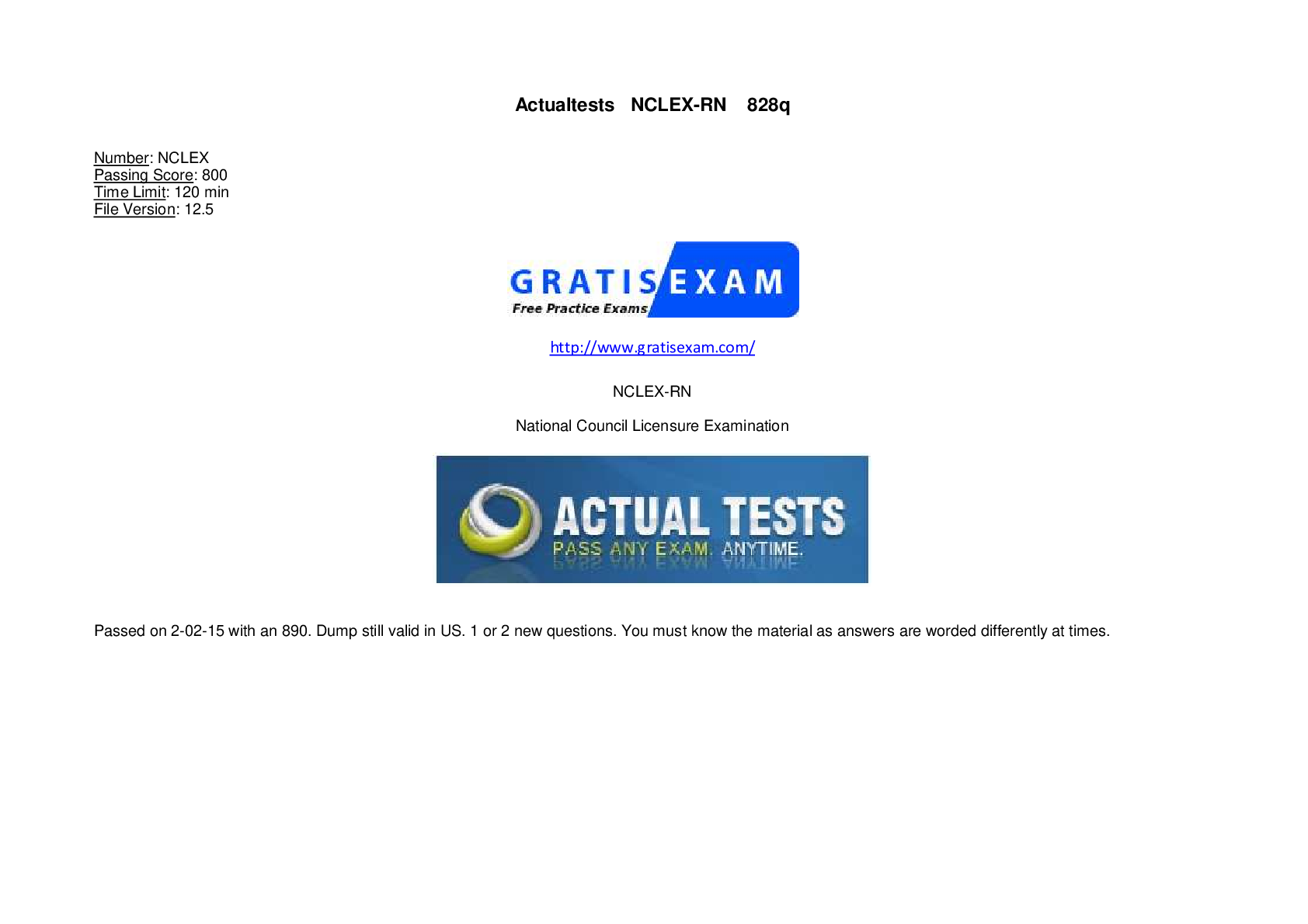


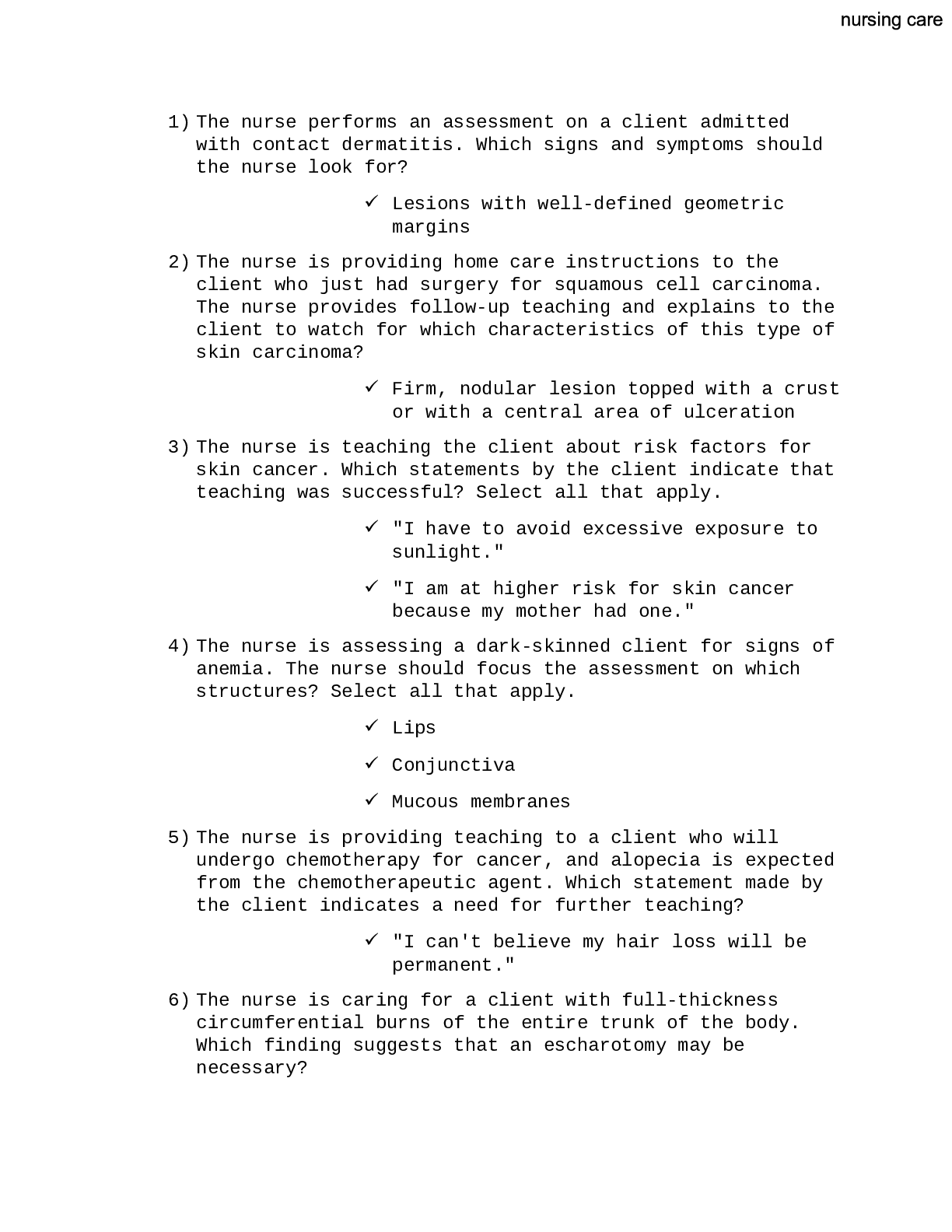

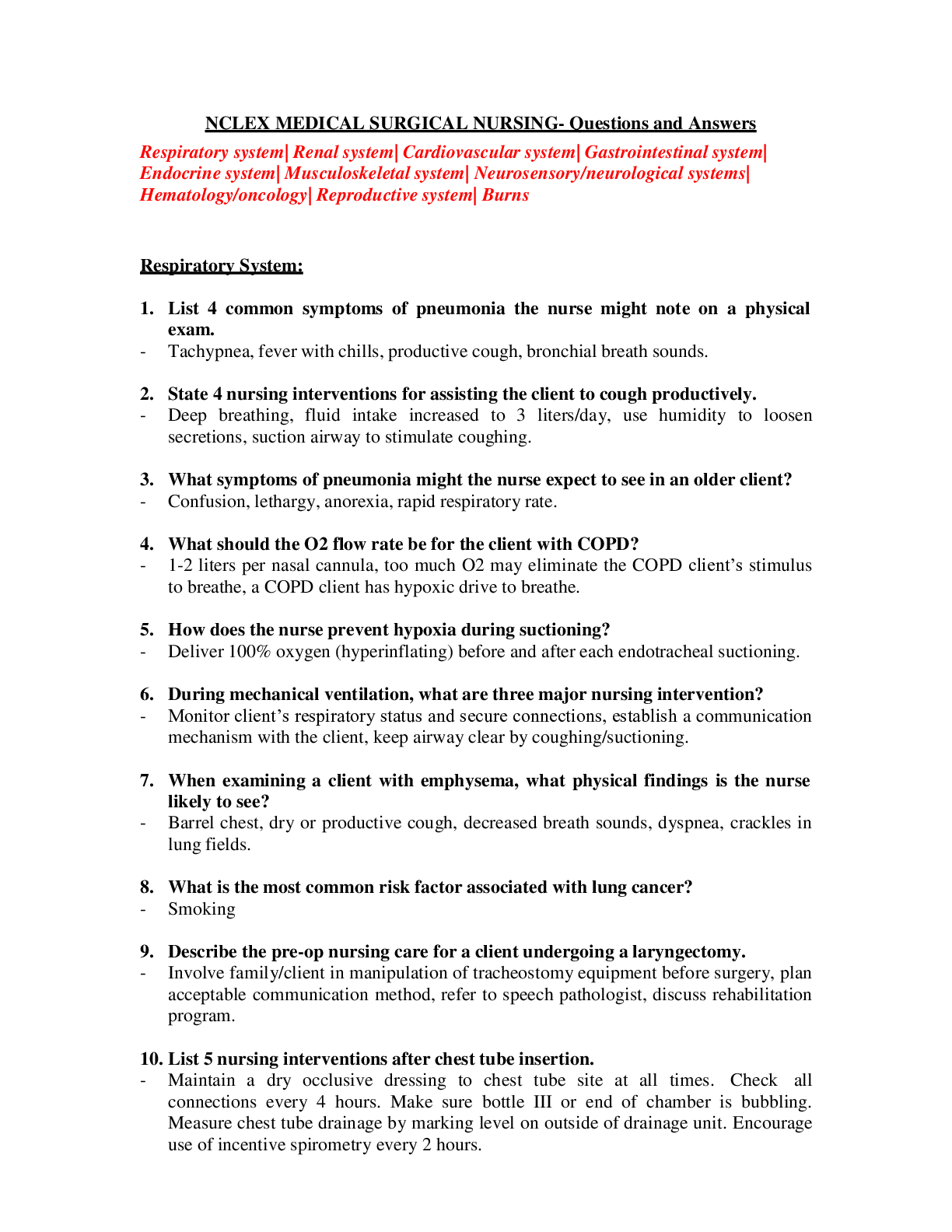


.png)

